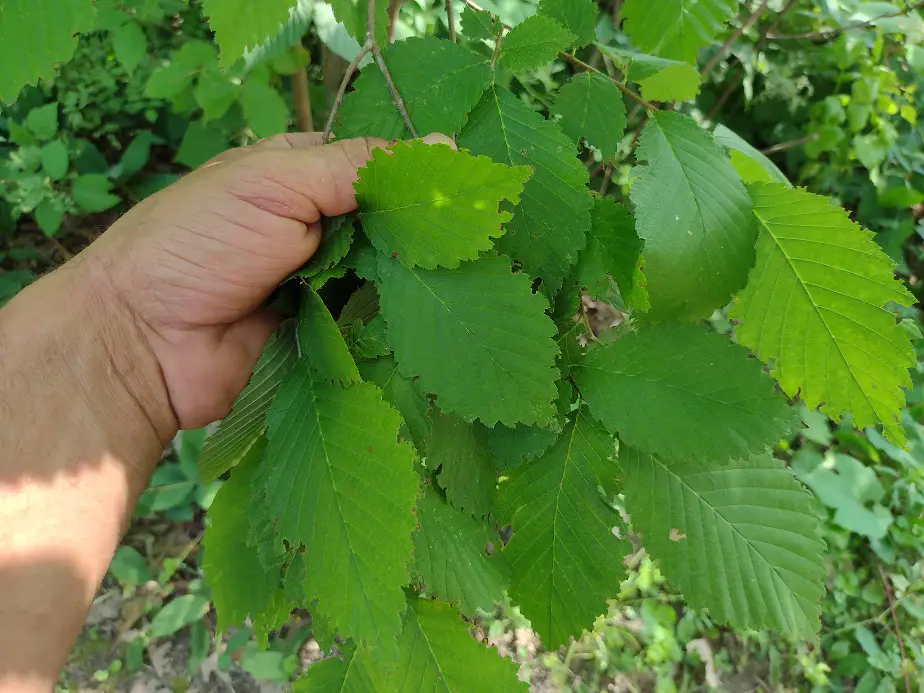Fodder trees are just trees that grow leaves, nuts, or fruit for livestock feed. I have over 1,000 fodder trees on a small coppice lot and they provide a ton of animal feed.
Fodder trees are most often planted from rooted cuttings. Order them in early spring and plant them as the soil first begins to warm. Good tree growth requires water and fertile soil, as well as regular soil amendments. They are usually planted between 4 and 12 feet apart, and harvested either semi-annually or every few years. They can be harvested with hand tools or by machine.
Here’s some helpful information on growing and harvesting fodder trees
How to Plant Fodder Trees
Fodder Trees are established in three main ways. They can be wild growth, potted young trees, or by setting whips. Wild growth is the cheapest, but toughest to manage. Potted trees, usually from rooted cuttings, are expensive in large quantities but will produce the fastest harvest. Planting from whips is cheap and simple if you have moist soil and a source of whip growth.
potted trees can be planted at any time in the growing season, but they should be planted as early in the spring as possible. If the tree has green leaves on it, don’t plant it when it still could freeze. Trees that are not dormant should not be allowed to freeze, and hopefully won’t have to deal with much of a frost.
Dig a round hole two or three times the size of the rootball and loosen the soil for an even wider area. I like to sprinkle in some coarse inoculated biochar for improving drainage and nutrient-holding at the initial roots. I have used aged manure and woodchips to do the same. I have found horse manure to work very well with most trees.
Add any needed soil or mineral amendment, and loosen the rootball well before planting. Let those roots out of the soil and the tangled mess they may have come in. Burry up to the soil mark on the tree trunk and water it well. Keep watering every few days, or as soon as the soil dries out 2 inches deep.
Bare-root, dormant trees are planted the same way. They can be planted earlier because they are dormant and not actively growing. Cold and freezing temperatures won’t hurt them as long as the tree type is hardy. Just plant them in the ground as deep as the soil mark on the trunk, or slightly above the root system. Keep the soil moist but not wet.
Most trees will struggle in very wet soil. It tends to kill off the roots. Mulberry is an example of a tree that particularly doesn’t like overly wet roots. Poplar, Aspen, and Willow will tolerate wet soil pretty well.
All of these trees should have some fertility management practice ongoing. You need to consider all your soil worthy of management and improvement, not just the garden. Compost, natural mulch, and even synthetic fertilizers can be used. I prefer to greatly limit all synthetic fertilizers myself because they themselves are hard on soil and are often destructive in the long-run.
Manure is the preferred fertility agent for trees. Having livestock that roam and/or graze among your trees is often a good option. Animals will feed on low-hanging fodder and deposit a nice fertility package here and there for you, free of charge.
I personally have some taller pollarded trees in my pig pen, and the edges of my pen are planted with mulberry, poplar, and willow just outside of the fence. That allows the trees to send off roots into the pig pen for fertility.
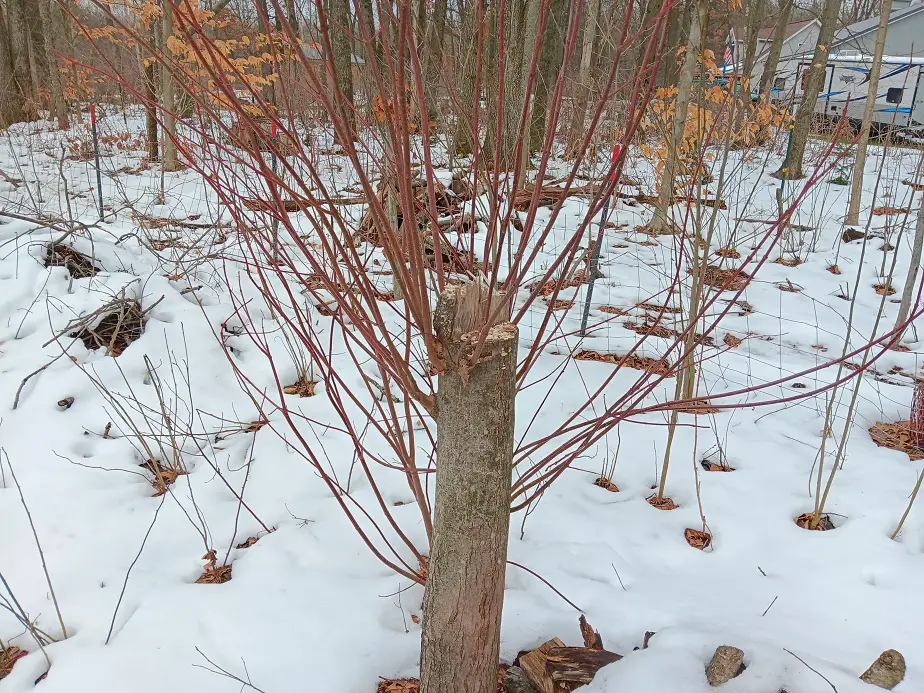
Maintaining Wild Fodder Trees
I have some wild-growth fodder trees. A few years ago, we cleared half an acre of mature forest. around 70 stumps soon sprouted into new growth, making bushy green clumps. I also had many hundreds of landrace poplar (more of a quaking aspen) that sprang up from the roots of downed trees. That’s the bulk of my fodder tree lot at the moment. It works, but there are downsides.
The biggest problem with that is I have a random menagerie. I didn’t choose what came up, but I can certainly choose what I keep. It’a tough to walk through sometimes. There are no rows or straight paths. At the moment, I can barely get through while pulling my wagon or hand cart and it takes a lot of maneuvering and twisting to do it. As time goes on, I will straighten it up into rows.
What I like best about it is how I have an assortment. Animals never do well on a diet that lacks variety. It’s unnatural. I have about 15 different species of trees for leafy feed. That’s a good variety. variety tends to always find a nutritional balance. Lack of variety tends to cause detrimental gut-disease and overall health and behavior issues in livestock.
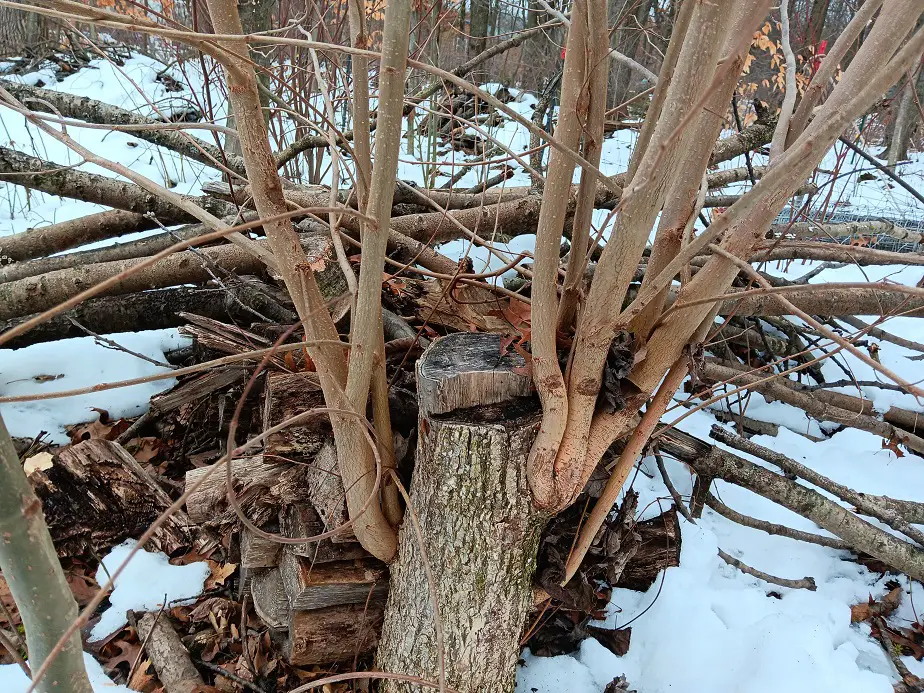
How to Grow Fodder Trees
Fodder trees can be grown in three main ways. They can be wild-grown, pollarded, or coppiced. Wild-grown fodder trees are never cut until you fell the entire mature tree. It’s more of a way to harvest lumber while allowing grazing animals to get some feed out of it too.
In the case of a non-fruiting tree, they are generally felled mature and left in the pasture until animals have eaten the leaves off of the tree top. It’s a fairly common method around here with the dairy farmers. It works, but it’s not a good way to maximize annual leaf production.
How I like to use the wild-grown method is with fruit and nut trees. I have some tall, mature oaks that I left standing along the back of my property. They drop acorns for the animals every year. One day, I might cut them down if I need firewood, but they are essentially automatic pig feeders every summer. I plan to do the same with the mulberry. Just let if grow and be a tree.
Pollarded and coppiced trees are regularly trimmed back to provide some mix of both firewood and animal feed. These tend to focus on leafy fodder. Coppiced trees are usually the most productive for leafy growth. Coppicing is cutting them low to the ground and allowing them to grow into more of a bushy shrub than a tree.
This type of growth puts out a higher ratio of leaf to wood, and much of the wood is scion wood (softer, spongy green wood). Grazing animals will eat this softer sort of wood as well as the leaves. I give them to my rabbits and they will eat a whole stick in one sitting.
Coppiced trees are faster to harvest and re-grow, and can be harvested multiple times annually. But, if animals are let out to graze in a lot of coppiced trees, overgrazing can kill them off. That’s where pollarding comes into play.
Pollarding is similar to coppicing, but you let the tree trunk be tall enough that animals can’t get to the leaves until you drop branches for them. Pollarding is a bit tougher to harvest because you’re going to be up over your head with something like an axe or polesaw. It’s a very useful technique around goats, horses, and cattle. If I had cattle, I’d pollard.
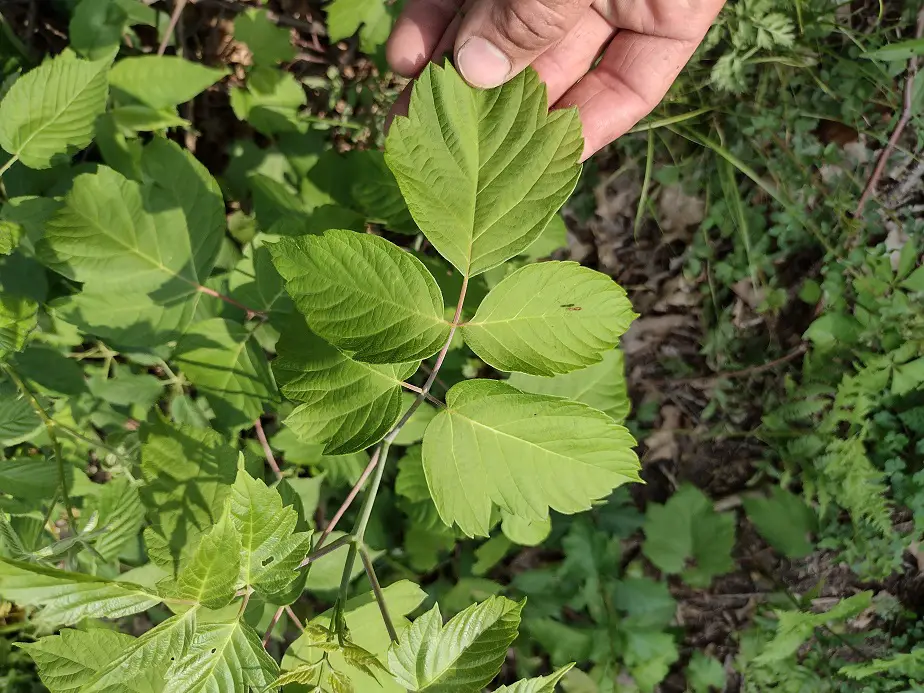
When to Harvest Fodder Trees
Fodder trees can be harvested as often as 5 times a year of as seldom as every five or ten years. Older growth will provide you with more wood and less fodder per acre/year. If firewood is a need as well as fodder, you may need to adopt a longer harvest timeframe. for maximum leaf production, harvest the top two feet after four or six feet of new growth for the year.
Wait until the leaves are mostly grown. but don’t wait all summer. Fast-growing trees will replace leaves and scion growth after one or two months. The fastest growing trees like Hybrid Poplar and Hybrid Willow will have regrown within one month.
I harvest my coppiced trees after the leaves look grown and re-harvest once they have recovered. In the fall, I will cut off most all growth to the ground. If I had a brush hog, It’d do the job great. That will allow the tree to put up new brushy growth every year instead of turning into an overgrown mess.
Some of my trees are for firewood production as well as fodder. Those, I still coppiced but I let them go for a few years before cutting back. For most trees, You can coppice on up to a 6-year schedule and they will consistently grow to the same size every cycle. I am planning on more like a 3-year rotation for our faster-growing hybrid poplar.
I will simply throw the entire coppice into the aminal pen and get it after they’ve made breakfast from the leaves. It’s been working well for me, and I get some great-sized wood for a cooking fire. For more log-size wood, you should consider a harvest schedule for 6 or more years, depending on the type of tree.
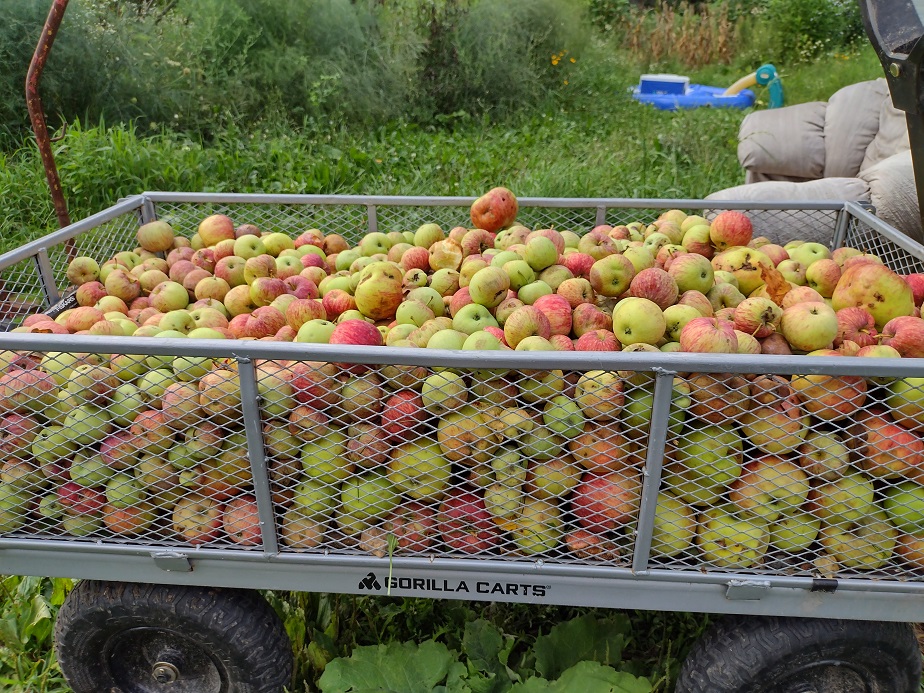
Which Fodder Trees are Best?
10 of the most functional fodder trees in North America are the
- White Mulberry
- wild Mulberry
- Hybrid Poplar
- Hybrid Willow
- Hazlenut
- Pecan
- Seabuckthorn
- Apple
- Pear
- Persimmon
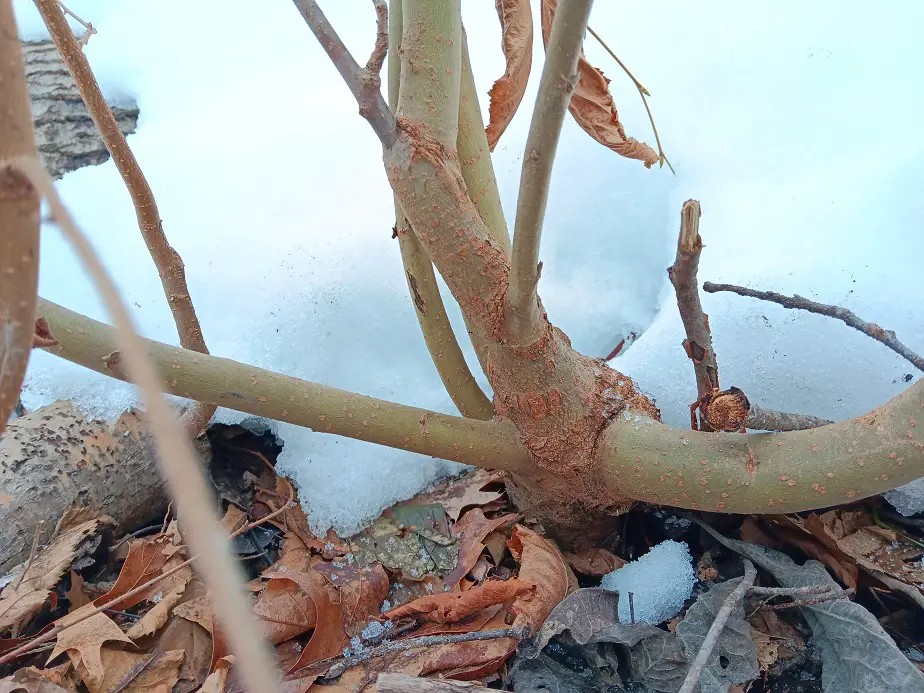
There are more options and many varieties within these selections, but this is a basic functional list to get your ideas flowing. Basically, you have three classes of fodder trees; fruits, nuts, and leaves. The leaf varieties are more popular these days because they can provide feed for a grazing-type animal for most of the growing season. And for the record, most all wild trees will work for leaf fodder.
Fruit trees offer a concentrated, highly palatable energy source for animals. I planted apple trees for pig feed, and the new mulberries will help that a lot. Fruit trees usually only produce fruit for about a month. Some will go longer. For example, my apple trees will only produce a crop for a month. However, I got early, mid-season, and late-season varieties.
That will give me almost three months of ripening, sugary fruits for pig feed. I get my first apples in August and soon I’ll get other varieties in September and October. Mulberry usually produces for about a month about mid-June to mid-July. That means from June through October, I’ll have free pig feed most of the time. As long as the spring weather cooperates.
If you want to know more about raising and feeding pigs, check out this article:
Nut trees are great. Nuts are not as palatable and not as digestible to animals. But they store super easy, They all have fat and starch, and some are high in protein. Ideally, a combination of all three categories of fodder trees should be used together for most livestock. My pigs need more energy so I should focus on fruits and nuts, with some leaves.
If you want to plant fodder trees for cattle, sheep, or goats, you’re going to want to go heavy on the leaf crops. Still, fruits and nuts will be valuable to add calories to their diet and can effectively replace grain. Two months of ample amounts of fruits and nuts falling in your pasture will be able to fatten your animals up nicely. I will say that apple-finished pig is amazing.
More than anything you need to consider both what you want and what’s going to be simple. Couple that with varieties that will grow in your area and you’ll be off to a great start.
Related Articles:

